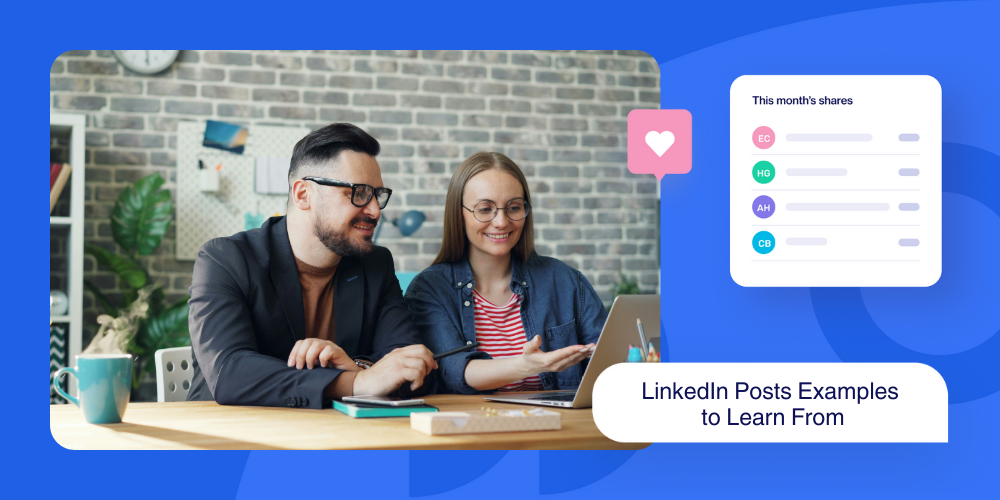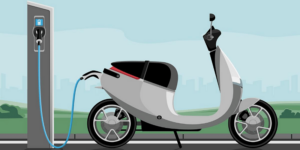LinkedIn is packed with thought leaders, industry influencers, and brand ambassadors, all vying for audience attention. While it is still the platform of choice for B2B buyers, standing out and capturing your audience’s interest is increasingly challenging.
The good news? With the average LinkedIn post commanding a respectable 3.85% engagement rate, there is a real opportunity to connect with prospects through your content. But not every post is worth two minutes of your prospects’ morning commute or lunch break- you need content that is captivating and relevant to your audience.
While there’s no secret sauce to creating the perfect LinkedIn post, studying other players’ hits (and misses) in this space will give you a significant advantage.
What Makes a Good LinkedIn Post?
A good LinkedIn post will usually break with convention. With 96% of B2B companies using LinkedIn for marketing, you won’t be able to stand out in a sea of posts if you’re doing the same things everybody else is doing. At the same time, some LinkedIn post types tend to perform better than others. They often have essential positive qualities in common, such as a compelling opening that quickly hooks the reader’s attention and an engaging visual or multimedia element.
Consider also using accessible language, incorporating a sense of humor in your tone of voice, and embracing a storytelling structure to enhance a post’s appeal. Sometimes, a more serious tone or a non-narrative format may be advisable. Think, for instance, when discussing a sensitive topic like a cybersecurity threat or presenting a new industry report.
Most importantly, you should ensure that everything you post aligns with your brand identity, values, and core message. Plus, you should have a clear and updated schedule with a consistent publishing cadence. Viral posts are great, but you don’t want any one-hit-wonder. Instead, strive for consistency and regularity to keep appearing on your prospects’ feeds and slowly build visibility.

8 LinkedIn Post Examples We Can Learn From
1. The Alliance Background Origin Story

Every superhero needs an origin story, so consider these posts a rite of passage for your brand. This example shows how talking about why and how you embarked on your career can make you relatable to your audience.
While this is an employee advocacy post written in the first person, you can leverage similar storytelling formats to share more about your company, how it started, the team, and its mission or goals. You can even interview your CEO or business leaders so you can ghostwrite their stories, create Q&A blogs, or produce videos where they share their motivations.
2. Strata’s Client Testimonial

Reviews, success stories, and testimonials are the proof in your pudding. They showcase evidence that you deliver on your promises and have a record of producing outcomes clients are happy with. This post from Strata uses LinkedIn’s Carousel feature to create a slideshow that lays out their work for Aegon Asset Management and the benefits Aegon has seen. That’s a simple and direct way to build trust and show your leads you understand their challenges.
3. Launch Time for SHRE

LinkedIn Post Examples We Can Learn From – SHRE
Do you have an announcement to make? Post it on LinkedIn and let your audience be among the first to hear it. You can post about any new product, event, or even job opening.
A good announcement post should quickly get to the who, what, and when, especially if it’s a post about an upcoming event you want your audience to register for. SHRE used eye-catching emojis and an image gallery to announce the launch of their digital business card platform, along with a link and a call to action—key ingredients to a post that not only engages but drives conversions.
4. HubSpot Polls Its Audience

Engaging in a dialogue with your audience can be one of the best ways to deepen engagement and build a knowledgeable and authoritative brand image. However, jumping into high-level discussions can be intimidating. Multiple-choice polls can be a fun way to ease your audience into direct interactions with your brand.
The poll in this example asks a question anyone can easily engage with. The results can be discussed in the comments or used as a basis for future posts.
5. Zapier Employees Talk Company Culture

Highlighting your company culture and employee stories can be essential to your branding strategy, especially when attracting talent. This post by a recruiting leader at Zapier provides a personal take on the importance of good leadership and mentoring.
Employee advocacy campaigns have obvious benefits when trying to reach job candidates, but they can also be effective on potential customers. When customers see employees expressing confidence and enthusiasm about their work, it speaks to the quality customers should expect from that company’s products and services.
6. Salesforce Goes Live On Video

Multimedia content remains king, from live chats to year-in-review videos or customer testimonials. As a result, many social media platforms are either designed around it or retooling themselves to feature it more prominently. Dropping the walls of text occasionally to share stimulating video content helps take your audience on a journey and capture their attention.
Here, Salesforce posted a live video event advising on deploying internal AI solutions. Once the event is over, a recording will remain archived in the post. While there is excellent value in professionally produced videos like this, don’t hesitate to use your mobile device to generate video content on the fly.
7. Buffer Shares Its Values

Increasingly, people want to do business with companies that share their core values, whether that means general ideals accessible to a broad audience or official positions on specific issues that some may find controversial.
Communicating your values helps that audience find you, and LinkedIn can be a perfect platform for taking a stand on what matters to your brand, its employees, and your clients and partners. In this example, Buffer discusses some of its values in a post about its four-day workweek.
8. The Marketing Millennials Repurpose A Meme

This one is a twofer. It shows off two helpful approaches for LinkedIn posts: sharing humorous images and repurposing content already posted elsewhere. The caption is kept minimal, allowing the reposted meme to speak for itself.
The dry humor makes the brand relatable to a particular audience, and the lack of salesy language makes it seem all the more authentic. This post can motivate customers to notice and pay more attention when they see you on their feed.
It also reminds us that great content (from memes to industry reports) can have many lives. Repurposing existing content (either your own or somebody else’s) in new and engaging contexts can be very effective for sales enablement —just be careful not to overdo it.
The Right Tools Build Better LinkedIn Posts
Ultimately, the best way to develop an effective presence on LinkedIn is to draft and follow a data-backed social media marketing strategy. Not every post will be successful, but if you continuously monitor performance and keep an eye on what is working and what isn’t, you can quickly adapt to ensure the highest possible engagement and increase conversions.
Tools like Oktopost can make a world of difference when managing LinkedIn campaigns and other aspects of social media scheduling, content production, and distribution. In addition to streamlining your workflow by scheduling and automating posts across any social channel, Oktopost offers extensive analytics that lets you see what content resonates with your customers and find the best opportunities for improvement.
Sign up for a free demo today to see how Oktopost can help you create compelling LinkedIn posts for the highest chance of conversions.


![Read more about the article [Funding alert] Fintech startup GimBooks raises seed round from First Check Ventures, Y Combinator](https://blog.digitalsevaa.com/wp-content/uploads/2021/09/Image4uze-1628144908028-1631094743679-300x150.jpg)







